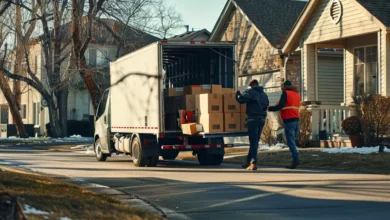Emergency Drain Cleaning: What to Do When Your Drain Suddenly Backs Up

Most people don’t think twice about their drains—until something goes wrong. One day everything seems fine, and the next you’re standing ankle-deep in murky water, trying to figure out why the drain is not going down.
You check the sink. It’s slow. The shower? Worse. Then the toilet makes a strange sound. That sinking feeling settles in fast.
You’ve got a backed-up drain. Possibly more than one. And at that point, emergency drain cleaning isn’t a suggestion—it’s the next move to call a plumber.
First, stop running water
This part’s easy to overlook at the moment. You might want to test other drains or run more water to “flush it through.” Don’t.
Every time you use water, it adds more pressure to the system. That extra load? It has nowhere to go. So it either slows down or starts coming back up.
Turn off any running taps. Skip the laundry. Hold off on the dishwasher. If water’s not draining in one spot, it can back up somewhere else nearby. It’s all connected.
Try to narrow it down
Take a breath and check a few things. You don’t need to fix anything yet—just get a sense of the scope.
Start by flushing a toilet and watching what happens:
- If it’s just one fixture that’s slow, the clog is likely local.
- If you notice issues in different parts of the house, it could be deeper—maybe in the main drain line.
The difference matters. One is annoying but usually fixable. The other can turn into a real problem if you let it sit too long.
Also, pay attention to smells. If you’re catching a sewage odor, even faintly, that might mean the backup’s coming from deeper down.
See also: Top Benefits of Choosing Home Nursing Services for Your Loved Ones
Resist the quick fixes
This is where a lot of people get tripped up. Out of frustration, they grab a bottle of drain cleaner, dump it in, and hope it solves everything.
The truth? Those chemical cleaners sometimes do more harm than good. They can eat away at your pipes or sit in one spot doing nothing if the blockage is too far down.
Same goes for over-plunging. It feels productive, but if the clog isn’t within reach or if the pressure isn’t focused, it’s probably not helping.
Snaking the drain can work—sometimes. But if the issue’s further down the line, a basic tool isn’t going to reach it.
This is where sewer camera inspection comes in. It’s what professionals use to actually see what’s going on inside the pipe—tree roots, breaks, or just years of buildup.
So when should you call for help?
Honestly? Sooner than later.
Some clogs are just surface-level. A glob of hair. A chunk of food. But when water is coming up from multiple places or draining stops completely, that’s not a wait-and-see situation.
Emergency drain cleaning services don’t just clear the clog—they check for the cause. Often it’s something that’s been building for weeks, even months. Grease from the kitchen. Soap and hair from the bathroom. Small things that, over time, add up.
And in some cases, especially with older pipes, the issue might not be the clog itself. It might be the pipe.
What causes these sudden backups?
They almost never happen completely out of nowhere. Most of the time, there’s been a slow buildup that finally reaches a tipping point.
Some of the usual suspects:
- Grease solidifying inside pipes after being rinsed down the sink
- Clumps of hair that stick to the inside of bathroom drains
- Tree roots that grow into underground sewer lines
- Flushed items that aren’t meant to be flushed (wipes, even “flushable” ones)
- Old or misaligned pipes, especially in older homes
When things start to slow down, people often ignore it. Until one day, everything stops. That’s when emergency drain cleaning becomes the only option left.
How is it actually cleaned?
It depends on what’s causing the issue. But in bigger cases, especially ones affecting the main line, professionals often use hydro jetting. It’s a high-pressure method that uses high pressure water to clear out everything—grease, roots, mineral deposits.
It’s not something you can replicate at home. And that’s kind of the point. Some jobs require tools and techniques that just don’t come in a DIY kit.
Can it happen again?
Yes. Definitely. If the habits stay the same, the problem often does too.
So once everything’s cleared and working again, it’s a good time to think about prevention. You don’t want to go through the stress again if you can help it.
Some quick habits that help:
- Don’t pour oil or grease down the drain—wipe it up and trash it instead
- Use a mesh drain catcher in showers and sinks
- Avoid flushing anything besides toilet paper
- Run hot water through kitchen drains regularly, especially after cooking
Even better? Get your drains checked on a schedule—maybe once a year if your home’s older or if you’ve had issues before. It doesn’t take long and can catch small problems early.
Wrapping up
Drain backups don’t wait for a convenient time. They usually hit when you’re least expecting them. And once they show up, ignoring them doesn’t work.
Emergency drain cleaning gives you a way out. Not just to stop the immediate mess, but to figure out what caused it—and stop it from coming back.
It’s one of those things most people don’t think they’ll need until they do.



